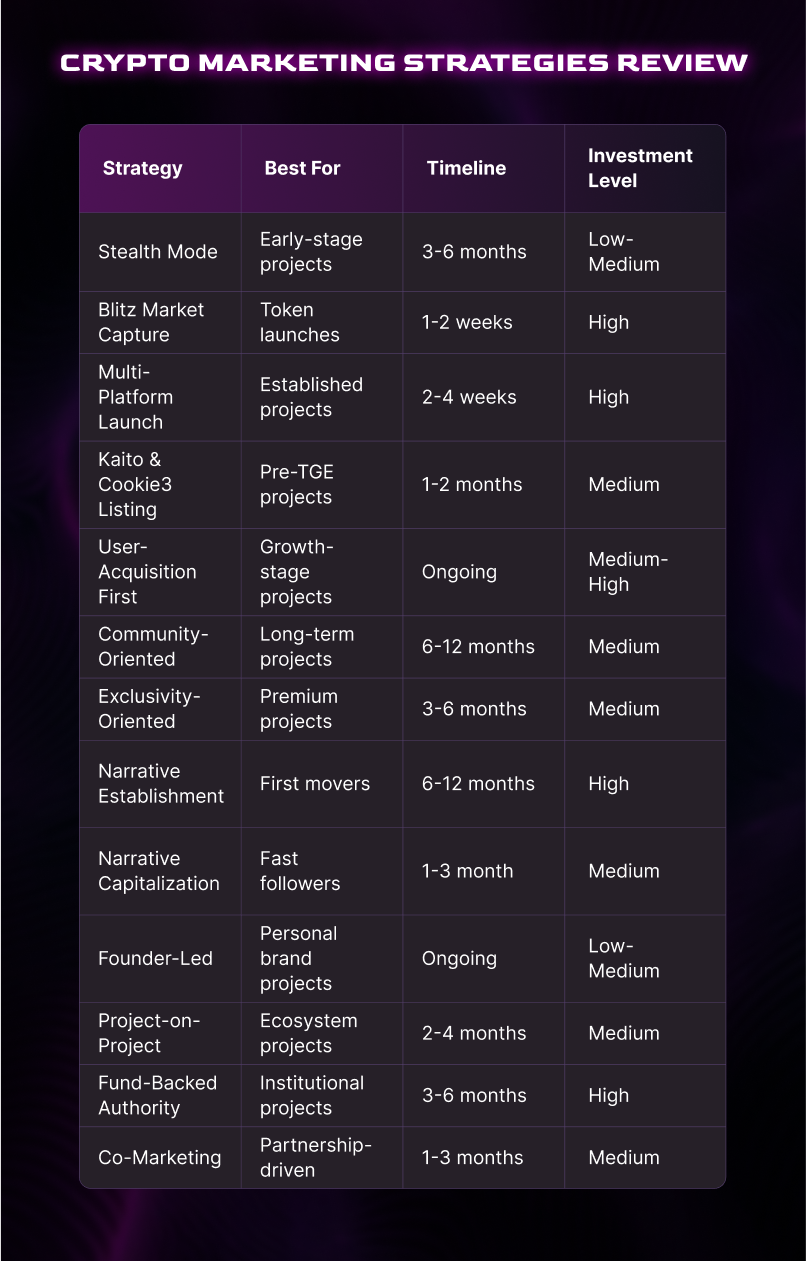Content List
Top 13 Crypto Marketing Strategies for 2025 — Best Digital Playbook
Serhii Dynnyk
03.09.2025
7 Min Read
This digital playbook breaks down 13 sophisticated marketing strategies covering everything from stealth mode to meme injection, designed specifically for serious Web3 projects ready to dominate their market.





